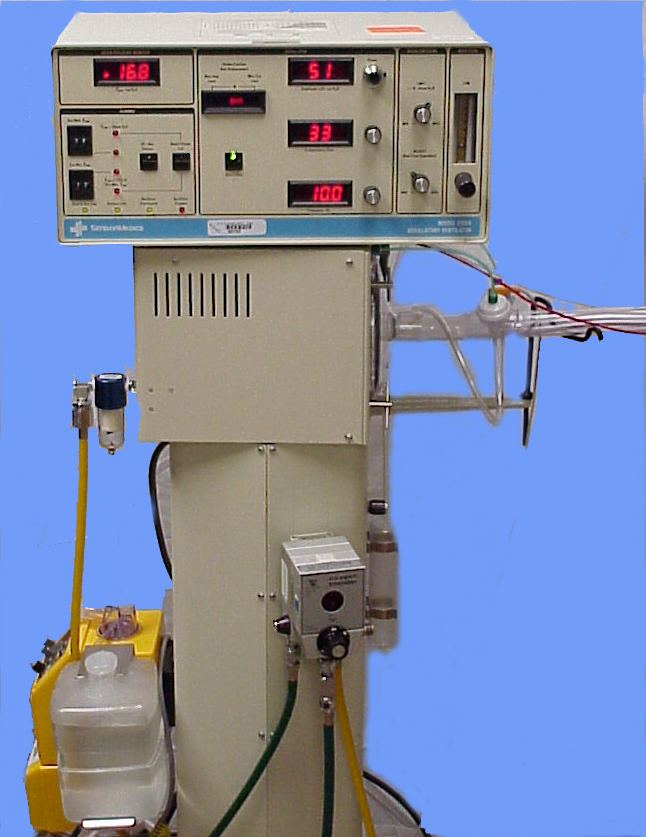 | ||
The SensorMedics high-frequency oscillatory ventilator is a patented high-frequency (>150 Rf) mechanical ventilator by Cardinal Health. The 3100A model was approved for use in the United States by the Food and Drug Administration in 1991 for neonatal application for the treatment of all forms of respiratory failure; then subsequently approved in 1995 for Pediatric Application, with no upper "weight limit", for treating selected patients failing conventional ventilation. The High-frequency oscillatory ventilator
Contents
3100A
The 3100A model is used for infants and children under 35 kilograms (<35 kg).
3100B
The 3100B model is used for all other people greater than 35 kilograms.
Bias flow
Bias flow – Adjusting bias flow will affect mean Paw. Lowering bias flow may decrease work of breathing and facilitate weaning.
Adjust
Adjust – Sets the mean airway pressure. This control directly affects lung volume and oxygenation.
Power
Piston displacement is controlled by the power setting. Power changes ventilation and thereby changes blood PaCO2 levels.
Inspiratory time %
Ti% is the percentage of time allotted for inspiration. Once this value is set, it is rarely changed.
Frequency
Frequency (Rf) is the number of breaths in one second, expressed in hertz (hz). One hertz is equal to 60 breaths per minute. (Rf)
Problems
Since neither the 3100A or the 3100B measure actual tidal volumes, it is impossible to wean with precision; some clinicians find this to be problematic in the application of oscillatory ventilation.
